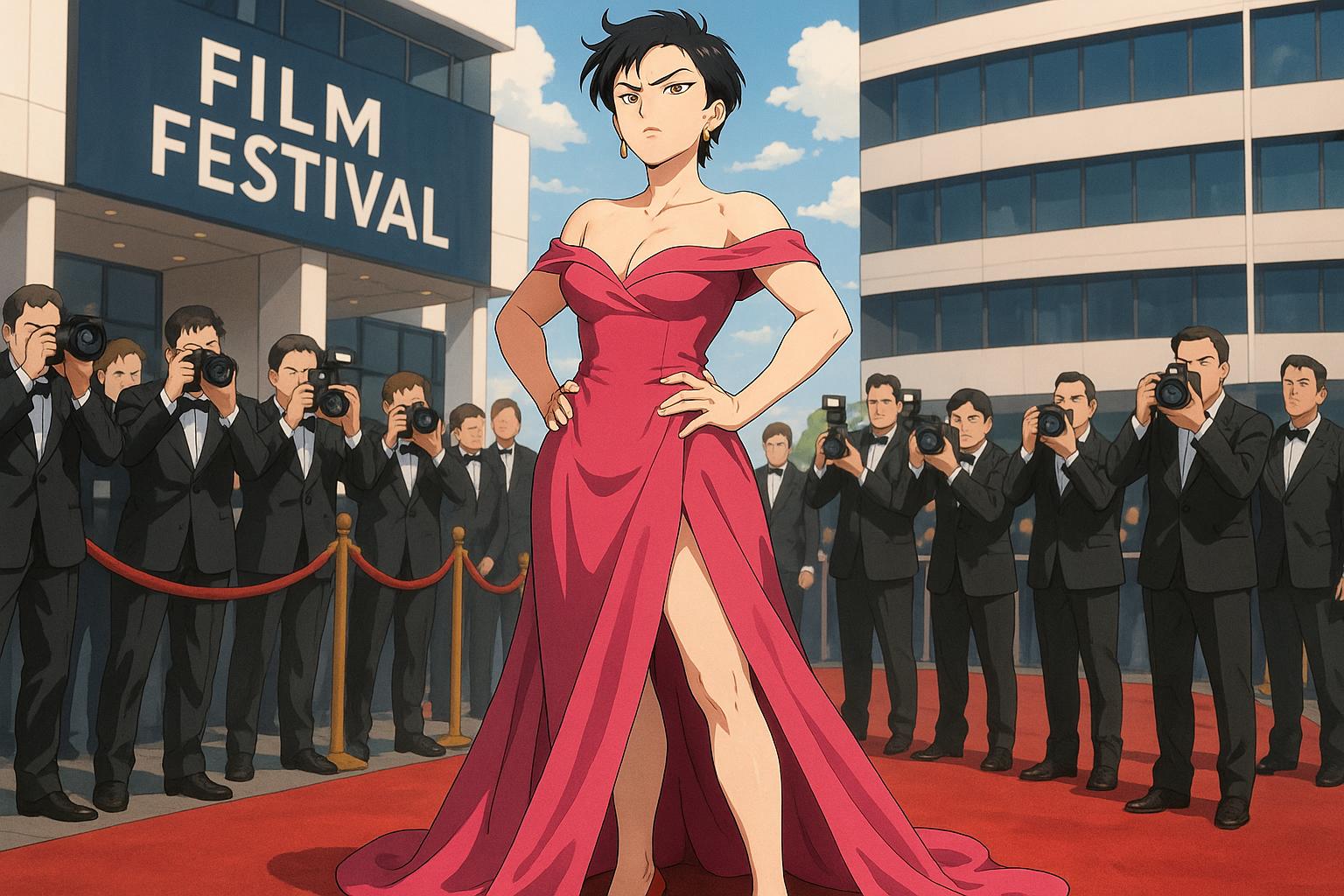Not for the first time, the Cannes Film Festival—a beacon of glamour and sartorial expression—has imposed a dress code that restricts attendees from embracing bold and daring fashion choices. In a recent statement, festival organisers indicated that various outfits will be off-limits this year, specifically citing a ban on “naked dressing” and oversized garments. According to organisers, the rationale for these restrictions hinges on “decency reasons” and the necessity of maintaining a smooth flow of guests and suitable seating arrangements in the Grand Théâtre Lumière.
The new guidelines encourage more conventional attire, including cocktail or black dresses, with a nod to the increasingly popular dark-coloured pantsuit. Historically, the festival has seen a plethora of extravagant fashion statements, but this year, the rules appear to signal an inclination towards more conservative sartorial choices. In previous years, high-heeled shoes had already been the subject of debate, but now, the stakes seem higher, with a clear directive: elegance is key.
However, just five days into the 12-day festival, it was evident that the memo had not reached every attendee. High-profile figures such as Halle Berry, Eva Longoria, and Heidi Klum made striking entrances in gowns that defied the new restrictions. Berry, a jury member, was seen adorned in a voluminous pink gown by Celia Kritharioti, and while she stated, “I’m not going to break the rules,” her outfit suggested otherwise. Similarly, Klum’s elaborate pink organza gown with a long train drew its share of attention and defiance against the diktat.
The longstanding tradition of provocative and revealing outfits on the Cannes red carpet dates back to at least the 1970s, with iconic moments such as Jane Birkin’s hip-slit gown and Madonna’s daring Jean Paul Gaultier ensemble. This ongoing trend has raised critical discussions about the policing of women’s bodies in the public sphere. As fashion historian Einav Rabinovitch-Fox posits in her work "Dressed for Freedom," while clothing can serve as a medium of social control, it equally provides a form of transgression and empowerment.
Feminist author Natasha Walter, known for her insights into media portrayal of women, critiques the growing trend of nudity on the red carpet, suggesting it enhances objectification and hyper-sexualisation. Nevertheless, she cautions that prohibitive measures may inadvertently reinforce these issues. “Banning it feels counterproductive,” she stated. “It's like school uniforms for girls; the tiniest skirt becomes an act of rebellion.”
The paradox at play is stark: while the festival has few regulations concerning on-screen nudity, it seems at odds to allow artistic expressions of the body within films yet impose strict dress codes on attendees at the events themselves. The very celebration of cinema—and the red carpet's dual role in promoting films—contradicts the notion that bodies express creativity and individualism.
Interestingly, the enforcement of these new guidelines remains ambiguous. Despite the official ban, no punitive measures were levied against those who opted to defy the dress code, leaving many to speculate whether this is another instance of theatrical censorship or simply a misguided attempt to reclaim “good taste.” Furthermore, the focus on what women wear raises critical questions about gender norms in fashion. Walter highlights that limiting their expression can imply that “women are not appreciated for their talent” and must instead resort to more ostentatious means to garner attention.
In the wake of such debates, guests continue to grace the red carpet, navigating the delicate balance between personal expression and institutional expectations. As some attendees embrace more subtle styles, like Bella Hadid’s unexpected choice of modesty over her usual daring looks, the festival presents a telling moment in fashion and feminism—a stage that often reflects broader societal shifts.
Overall, the Cannes Film Festival's recent move reflects not just an internal struggle within the fashion world but an ongoing cultural discourse about autonomy, visibility, and the complex tapestry of gender politics within public arenas.
Reference Map
- Paragraphs 1, 2, 4, 5, 6, 9
- Paragraphs 1, 2, 4
- Paragraphs 3, 4, 7
- Paragraphs 5, 6
- Paragraphs 2, 7
- Paragraphs 2, 8
- Paragraph 6
Source: Noah Wire Services
